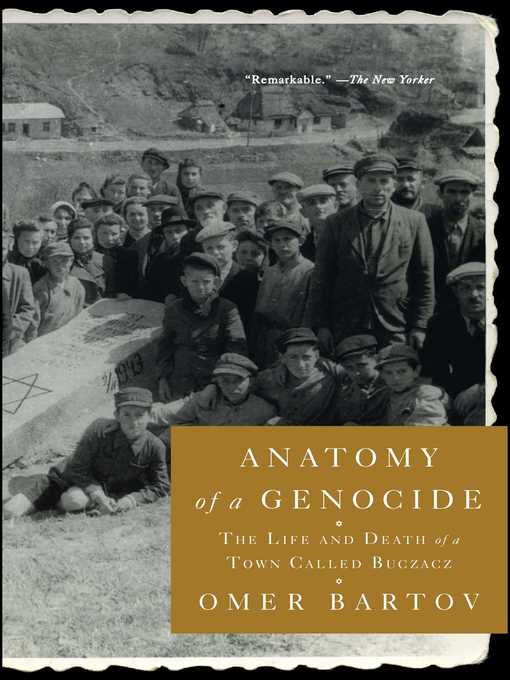
Anatomy of a Genocide
The Life and Death of a Town Called Buczacz
کتاب های مرتبط
- اطلاعات
- نقد و بررسی
- دیدگاه کاربران
نقد و بررسی

August 1, 2017
Brown University historian Bartov challenges the commonly held belief that genocide results when a divisive political leader preaches hatred, backed up by military power. Instead, he argues, genocide works from the bottom up, with friends and neighbors storing up small slights that are easily exploited. To make his point, he focuses on the Eastern European border town of Buczacz, now a part of Ukraine and before the Holocaust home to a peaceable mix of Poles, Ukrainians, and Jews, chronicling how violence descended and warning how to avoid such situations in the future.
Copyright 2017 Library Journal, LLC Used with permission.

December 1, 2017
The tale of one Eastern European town reflects a long history of anti-Semitism and political strife.Bartov (European History/Brown Univ.; Erased: Vanishing Traces of Jewish Galicia in Present-Day Ukraine, 2007, etc.) draws on historical and archival sources to create a stark portrait of a town in present-day Ukraine, where enmity between Polish and Ukrainian residents, compounded by Russian, Austrian, and German incursions, resulted in violent reactions against the Jewish population. This contribution to Holocaust and genocide studies, in which the author is a respected scholar, is notable for the barbarism that erupted among ordinary men and women against their Jewish neighbors during World War II. Anti-Semitism, however, was rampant much earlier: in a 1924 memoir, a witness reported seeing a Jewish orphanage set on fire by soldiers in search of vodka; in a synagogue courtyard, he "was stunned by a terrifying picture of destruction, vandalism, and cruelty." Houses were filled with raped Jewish women and "men with smashed heads and gouged eyes." Jews became the focus of hatred by Poles who believed that they preferred Austrian rule to Polish independence. Jews, Bartov writes, "were featured as an alien, inassimilable, and potentially subversive element," lumped together with despised Russians and communists. The most hated enemies were Ukrainians, characterized as savage hordes. Ukrainians, for their part, publicized their plight as victims, aligning themselves with Jews. During the war, ethnic hatred erupted into mass murder. Germans created local groups to suppress organized resistance, transforming the Ukrainian militia into "a uniformed district police force." Bartov profusely documents sadistic atrocities that occurred at the hands of soldiers, police, and security forces throughout the war. What he finds most shocking--and readers will agree--is the "astonishing ease" with which "spouses and children, lovers and colleagues, friends and parents, appear to have enjoyed their brief murderous sojourn in the region" as they killed people they knew personally. "For many of them," he writes, "this was clearly the best time of their lives."An important and horrifying contribution to Holocaust studies.
COPYRIGHT(2017) Kirkus Reviews, ALL RIGHTS RESERVED.

























دیدگاه کاربران